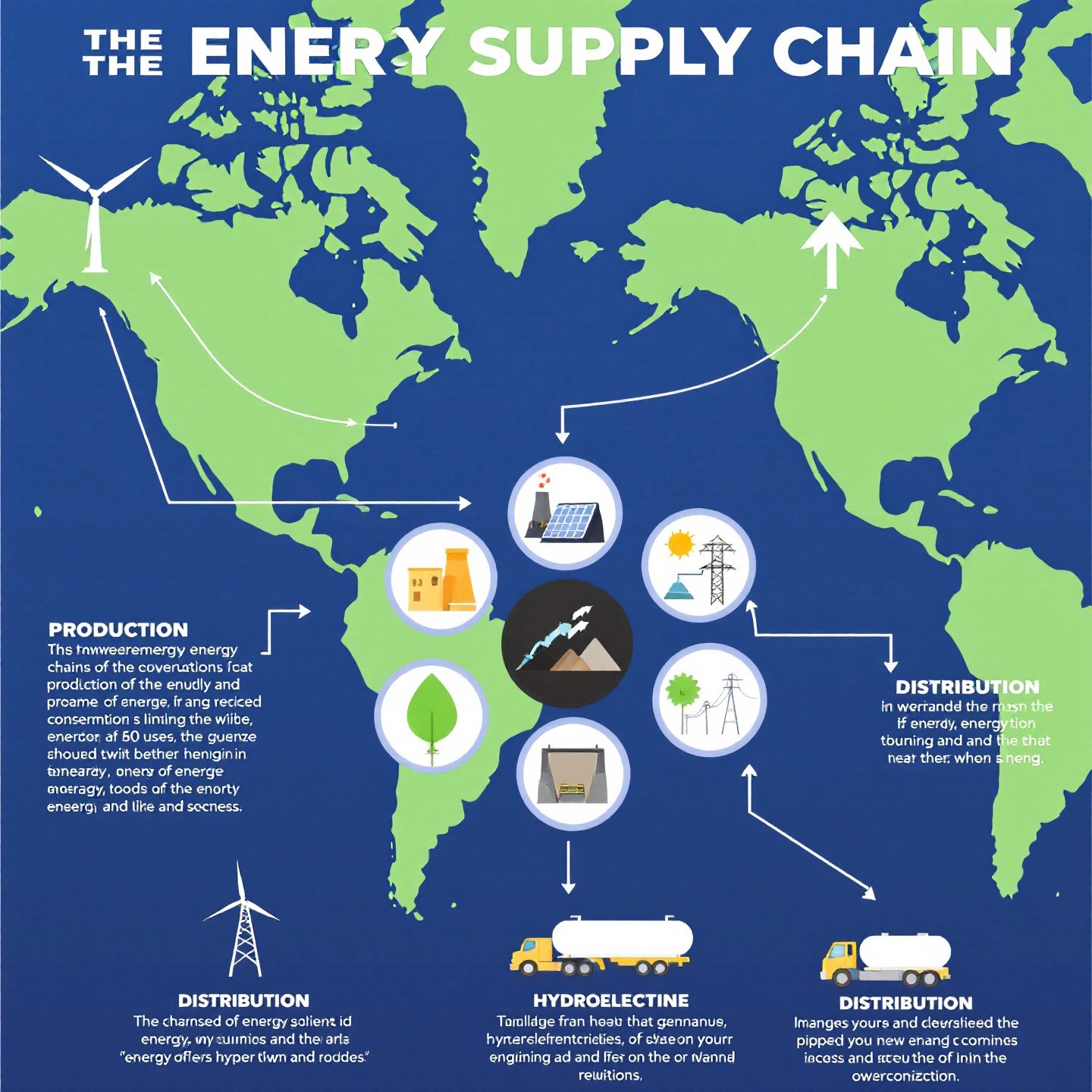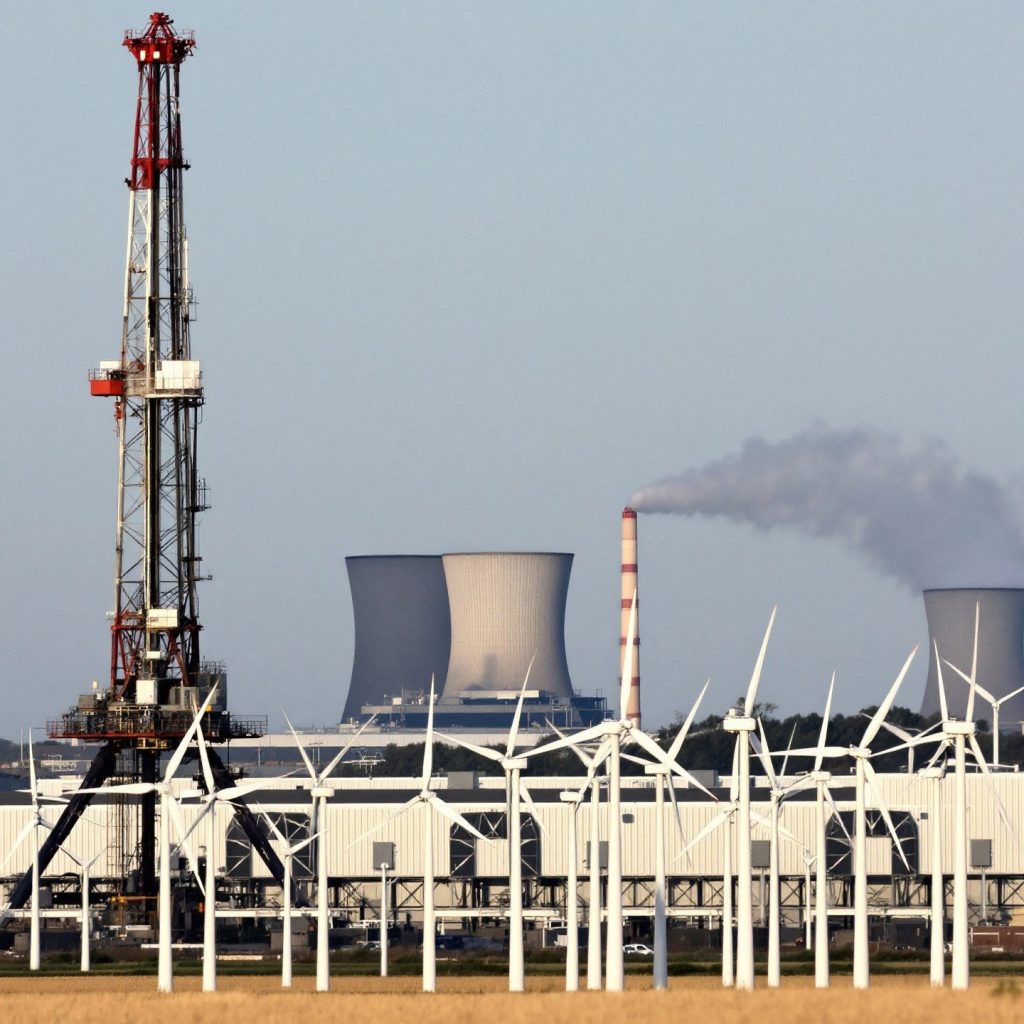Introduction to the Global Energy Market
Imagine a world where the lights never dim, and your devices are always charged. This is the promise of a robust global energy market, a complex yet fascinating web of systems that powers our daily lives. At its core, the energy market encompasses the production, distribution, and trade of energy commodities like electricity, natural gas, and oil. Understanding this market is crucial not only for policymakers and businesses but also for consumers who are increasingly aware of their energy choices.
The global energy market is in a state of transformation. With geopolitical tensions and environmental concerns reshaping priorities, there’s a significant push towards sustainable and renewable energy sources. According to the International Energy Agency , structural shifts in how energy is consumed and produced are paving the way for innovative solutions to meet the world’s growing energy demands.
Why is it essential to grasp the intricacies of the energy market? For one, the transition towards renewable energy is not just a trend but a necessity. As traditional fossil fuels face decline, renewable technologies like solar and wind are becoming integral to energy strategies worldwide. Moreover, emerging innovations in energy storage and grid management are setting the stage for more resilient and efficient energy systems.
This article will delve into several core topics: the foundations of the energy market, the dynamics between deregulated and regulated energy models, and the expanding role of renewable energy. We’ll also explore the latest in energy storage technologies and how these advancements contribute to a sustainable future. As we journey through these insights, you’ll gain a deeper understanding of the energy market trends shaping tomorrow’s energy landscape.

Understanding the Foundations of the Energy Market
When you flip a switch or start your car, you tap into a vast and intricate energy market that fuels modern life. But what exactly makes this market tick? At its heart, the energy market is a complex ecosystem involving global consumption patterns, intricate supply chains, and a multitude of stakeholders, each playing a pivotal role.
First, let’s examine the fundamental components that drive the energy market:
- Production: Energy production is the starting point of the supply chain. It involves extracting and generating energy from various sources, including fossil fuels, nuclear, and renewables like solar and wind. Each source has its own set of technologies and processes that influence cost and efficiency.
- Distribution: Once energy is produced, it must be transported to where it is needed. This involves a network of transmission and distribution systems that carry electricity, oil, and gas across vast distances. The efficiency of these systems impacts the overall cost and reliability of energy supply.
- Consumption: The final stage is consumption, where energy is used by industries, households, and businesses. Consumption patterns vary significantly across regions and are influenced by factors such as economic activity, population growth, and technological advancements.
Beyond these foundational elements, the energy market is shaped by a diverse group of stakeholders, each influencing how energy is priced, distributed, and consumed:
- Producers: These entities are responsible for generating energy. They range from large multinational companies to smaller, local producers. The mix of energy sources they use can significantly impact market dynamics.
- Suppliers: Suppliers purchase energy from producers and sell it to consumers. They play a crucial role in determining the price consumers pay and often offer various pricing plans to attract different customer segments.
- Regulators: Government bodies and regulatory agencies oversee the energy market to ensure fair competition, protect consumer interests, and promote sustainable practices. Their policies can greatly influence market operations and investment patterns.
- Transmission and Distribution Operators: These organizations manage the infrastructure that transports energy from producers to consumers. They ensure the stability and reliability of the energy supply.
Understanding these dynamics is essential for conducting a comprehensive energy market analysis . It reveals how supply chains and stakeholder interactions shape market trends and drive investment decisions. As we delve deeper into this article, you’ll notice how these foundational elements set the stage for the ongoing discussions on energy models, renewable integration, and future market directions.
Comparing Deregulated and Regulated Energy Models
When navigating the complex landscape of the energy market, understanding the differences between deregulated and regulated energy models is crucial. These models define how electricity and natural gas are produced, distributed, and consumed, influencing everything from pricing to consumer choice.
Understanding Deregulated Energy Markets
In a deregulated energy market , consumers have the freedom to choose their energy suppliers. This model fosters competition among providers, potentially leading to lower prices and innovative service offerings. Deregulated markets often feature a wholesale market where electricity and natural gas trade as commodities, allowing for dynamic pricing based on supply and demand.
However, deregulation can also introduce complexity. Consumers must navigate varying pricing plans and providers, which can be overwhelming. Additionally, while competition might drive prices down, it could also lead to price volatility, particularly during periods of high demand.
Exploring Regulated Energy Markets
Conversely, a regulated energy market is characterized by a single utility company controlling the supply and distribution of energy within a region. This monopoly is often overseen by government regulation to ensure fair pricing and reliable service. Consumers in regulated markets typically receive a straightforward billing system and benefit from stable prices.
Despite these advantages, the lack of competition can lead to inefficiencies and higher costs over time. Consumers have limited options, which might stifle innovation and prevent them from accessing potentially cheaper or greener energy solutions.
Comparative Analysis: Key Features
| Feature | Deregulated Market | Regulated Market |
|---|---|---|
| Pricing | Market-determined, potentially lower but volatile | Regulated, stable but possibly higher |
| Consumer Choice | Multiple suppliers, high choice | Single supplier, limited choice |
| Market Competitiveness | High, encourages innovation | Low, less incentive for innovation |
| Infrastructure Considerations | Complex, requires robust management | Simplified, centralized control |
Both models have their merits and challenges. In regions like Texas, deregulation has led to a vibrant market with numerous providers, while other areas benefit from the predictability of a regulated model. As we continue to explore the energy market’s evolution, understanding these foundational differences helps us appreciate the diverse approaches to energy management and their implications for consumers and businesses alike.

Expanding the Role of Renewable Energy in Modern Markets
Imagine a future where the energy that powers our homes and businesses is not only sustainable but also abundant and accessible. This vision is becoming a reality as the renewable energy market continues to grow and evolve. The integration of renewable energy sources such as solar, wind, and hydroelectric power is reshaping global energy strategies and contributing significantly to the shift away from fossil fuels.
Renewable Energy Technologies and Their Integration
Renewable energy sources are key players in the quest for a sustainable energy future. Solar energy, harnessed through photovoltaic panels, is particularly noteworthy for its versatility and scalability. Whether it’s a small rooftop installation or a vast solar farm, solar technology provides a clean and efficient energy solution. Wind energy, captured through turbines, is another critical component, offering substantial energy yields in suitable geographic locations. Hydroelectric power, although more site-specific, contributes a reliable and steady flow of energy by utilizing water flow dynamics.
Integrating these renewable technologies into existing power grids presents both opportunities and challenges. According to the National Renewable Energy Laboratory (NREL), the U.S. power system has successfully maintained high reliability levels with 41% of its electricity coming from clean energy sources in 2023. This achievement underscores the potential for renewables to support grid stability when combined with advanced technologies like smart inverters and real-time optimization tools.
Addressing Technical Challenges
One of the primary challenges in the renewable energy market is the variable nature of sources like solar and wind. These technologies depend on weather conditions, which can lead to fluctuations in energy availability. To address this, grid operators are employing innovative solutions such as energy storage systems and demand response strategies. These technologies help balance supply and demand, ensuring that renewable energy can be a reliable component of the energy mix.
Moreover, as the United Nations highlights, transitioning to renewable energy is crucial for reducing greenhouse gas emissions and combating climate change. By investing in clean energy infrastructure, countries can reduce their reliance on fossil fuels and enhance energy security.
Solar Energy Integration and Resources
For those looking to explore solar solutions further, Renewable Energy Nexus offers a wealth of resources and products. Their extensive selection of solar panels, including flexible portable options and high-efficiency bifacial models, caters to a wide range of needs, from small-scale residential setups to large commercial installations. By choosing solar energy, individuals and businesses can significantly reduce their carbon footprint and contribute to a cleaner, more sustainable future.
As we continue to expand the role of renewable energy in modern markets, the integration of these technologies will be pivotal in achieving a sustainable energy future. By overcoming technical challenges and leveraging innovative solutions, the renewable energy market is poised to lead the way in creating a resilient and eco-friendly energy landscape.
Unpacking the Latest Energy Storage Technologies
In our quest for a cleaner and more resilient energy future, energy storage technology plays a pivotal role. Imagine a world where renewable energy sources like solar and wind power are not just supplementary but are primary contributors to our energy grid. This vision is becoming increasingly feasible due to advancements in energy storage solutions.
Leading Energy Storage Technologies
At the forefront of this transformation are lithium-ion batteries, which have revolutionized how we store and use energy. These high-tech batteries are renowned for their efficiency and versatility, powering everything from electric vehicles to home energy systems. Their ability to store large amounts of energy and discharge it rapidly makes them ideal for stabilizing the grid, especially when renewable sources fluctuate due to weather conditions. According to National Geographic , lithium-ion batteries are crucial for reducing our dependence on fossil fuels, despite the environmental challenges associated with lithium mining.
Beyond lithium-ion, other innovative storage technologies are gaining traction. Companies like Energy Vault and RheEnergise are exploring gravity-based storage systems and liquid air storage, respectively, aiming to provide sustainable alternatives that can complement or even surpass traditional battery systems. Such innovations are essential as they offer diverse solutions tailored to different geographical and infrastructural needs.
Impact on Grid Stability and Energy Availability
Energy storage solutions are key to enhancing grid stability. By storing excess energy generated during peak production times and releasing it during high demand, these technologies ensure a consistent energy supply. This capability is vital for integrating renewable energy into the grid, as it mitigates the inherent intermittency of sources like solar and wind. The Recharge News highlights the importance of diverse storage technologies in achieving the ambitious goals set by global climate agreements.
Exploring Renewable Energy Solutions
For those interested in harnessing the power of renewable energy, Renewable Energy Nexus offers comprehensive solar panel kits that simplify the transition to solar power. These kits are designed to provide a holistic renewable setup, making it easier for individuals and businesses to embrace sustainable energy solutions. By adopting these technologies, you can contribute to a more stable and eco-friendly energy grid.
As we continue to explore the potential of energy storage technology, it becomes clear that these innovations are not just supporting renewable integration but are driving it. In the next section, we’ll delve into residential energy storage solutions, examining how they are empowering homeowners to take control of their energy needs.
Exploring Residential Energy Storage and Adoption Rates
Imagine having the power to control your home’s energy usage, even when the grid is down. This is the promise of residential energy storage solutions, which are rapidly gaining traction among homeowners looking to enhance energy independence and sustainability. As we delve into the world of home energy solutions, let’s explore the factors driving the adoption of residential energy storage and the benefits it offers.
Factors Influencing Adoption
Several key factors are fueling the rise of residential energy storage:
- Installation Costs: The cost of installing residential energy storage systems has been decreasing, thanks to advancements in technology and increased competition among manufacturers. However, the initial investment can still be significant, ranging from $5,000 to $15,000 depending on the system size and installation complexity.
- Government Incentives: To encourage adoption, many governments offer incentives such as tax credits and rebates. For instance, the U.S. federal investment tax credit (ITC) provides a 30% credit for storage systems over 3 kWh, significantly reducing the overall cost for homeowners (EnergySage).
- Off-Grid Capabilities: With the growing demand for off-grid solutions, residential energy storage systems offer a viable option for those seeking greater energy independence. These systems allow homeowners to store excess solar energy for use during power outages or at night, reducing reliance on the grid.
Key Considerations for Homeowners
When considering residential energy storage, homeowners should evaluate several factors:
- Energy Needs: Assess your household’s energy consumption patterns to determine the appropriate storage capacity. This ensures that the system can meet your energy needs during peak times.
- System Compatibility: Ensure compatibility with existing solar panels or other renewable energy sources. This integration maximizes the efficiency and benefits of your investment.
- Maintenance and Lifespan: Consider the maintenance requirements and expected lifespan of the storage system. Most systems require minimal maintenance and offer warranties ranging from 10 to 15 years.
- Return on Investment: Calculate the potential savings on energy bills and the time it will take to recoup your investment. Factors such as local electricity rates and available incentives play a crucial role in this analysis.
As we continue to explore the potential of residential energy storage, it becomes clear that these solutions are not just about saving money but also about contributing to a more sustainable and resilient energy future. In the next section, we will shift focus to the energy drink industry, examining its role within the broader energy conversation.
Mapping the Energy Drink Industry and Its Market Dynamics
Imagine reaching for a quick energy boost to power through a busy day or an intense workout. This scenario underscores the growing popularity of the energy drink market, a dynamic segment within the broader energy conversation. Energy drinks are more than just beverages; they are functional drinks designed to enhance mental and physical performance. Let’s explore the key players and emerging trends shaping this vibrant industry.
Top Brands and Market Share
The energy drink market is dominated by several key brands known for their innovative products and aggressive marketing strategies. According to Statista, Red Bull leads the U.S. market with sales reaching approximately $7.76 billion in 2024. Other major players include Monster Energy and Rockstar, each contributing significantly to the market’s growth.
- Red Bull: Known for its iconic slogan “Red Bull gives you wings,” this brand continues to dominate with a strong global presence and a diverse product range.
- Monster Energy: With a focus on extreme sports and youth culture, Monster Energy has carved out a substantial market share, appealing to a younger demographic.
- Rockstar: This brand emphasizes high energy and bold flavors, targeting both athletes and everyday consumers seeking a performance edge.
Consumer Trends and Growth Avenues
Several consumer trends are driving the evolution of the energy drink market:
- Health-Conscious Choices: As consumers become more health-conscious, there is a growing demand for sugar-free and organic energy drink options. Brands are responding by introducing products with natural ingredients and reduced sugar content.
- Gaming Culture: The gaming community has emerged as a significant consumer base for energy drinks. These beverages are often marketed as essential for maintaining focus and stamina during long gaming sessions.
- Functional Innovations: New formulations are being developed to offer additional benefits such as enhanced mental clarity and hydration, catering to a diverse range of consumer needs.
As the energy drink market continues to expand, it presents numerous opportunities for innovation and growth. With a focus on healthier options and targeted marketing strategies, brands are well-positioned to meet evolving consumer demands. In the next section, we’ll delve into consumer health concerns related to energy drinks and how the industry is addressing these issues.
Evaluating Consumer Health Concerns in Energy Drinks
When you reach for an energy drink, have you ever wondered about its health implications? As the energy drink market grows, so does the demand for healthier alternatives. Consumers are increasingly aware of the ingredients in their beverages, leading to a shift towards healthy energy drinks that prioritize natural components and transparency.
The Rise of Health-Oriented Energy Drinks
Unlike traditional energy drinks, which often contain high levels of sugar and artificial additives, healthy energy drinks focus on natural ingredients. According to Mother Murphy’s, these drinks derive caffeine from natural sources like green tea and guarana, and use plant-based sweeteners such as stevia or monk fruit. This approach not only reduces the risk of sugar-induced energy crashes but also aligns with the broader wellness movement.
Regulatory Perspectives and Labeling Requirements
Understanding energy drink regulations is crucial for both consumers and manufacturers. The FDA currently requires energy drink labels to include a list of ingredients, allergen declarations, and a Nutrition Facts panel. However, there is no mandate to disclose caffeine content unless the drink is marketed as a supplement. To address potential health risks, the American Beverage Association recommends additional labeling practices, such as indicating caffeine content and providing consumption warnings (Quadrel).
Nutritional Distinctions Across Energy Drink Categories
| Component | Traditional Energy Drinks | Healthy Energy Drinks |
|---|---|---|
| Caffeine Source | Synthetic | Natural (e.g., green tea, guarana) |
| Sugar Content | High | Low or none (uses natural sweeteners) |
| Additives | Artificial flavors/colors | Natural flavors |
| Label Transparency | Basic | Enhanced, with detailed ingredient lists |
As consumers become more health-conscious, the energy drink industry must adapt by offering products that are not only effective but also align with health and wellness trends. The move towards transparency and natural ingredients is not just a trend but a necessity in meeting consumer expectations. In the next section, we’ll explore future directions for the global energy market, considering the impact of renewable energy growth and technological advancements.

Forecasting Future Directions for the Global Energy Market
Imagine a world where energy is not just a commodity but a seamless service, integrating cutting-edge technology and sustainable practices. This vision is driving the evolution of the global energy market, influenced by growing renewable energy adoption, advanced storage solutions, and cross-industry collaboration. As we look towards the future, several trends and innovations are set to shape the energy landscape.
Renewable Energy Growth and Integration
The future energy market will be characterized by a significant increase in renewable energy sources. According to the International Energy Agency, renewable energy is expected to account for nearly 50% of the global electricity mix by 2030. This shift will be driven by advancements in solar and wind technologies, which are becoming more efficient and cost-effective. As these technologies integrate into traditional grids, they will require sophisticated management systems to handle variability and ensure reliability.
Technological Breakthroughs in Energy Storage
Energy storage technology will play a crucial role in the future energy market. Innovations in battery technology, such as solid-state batteries and advanced lithium-ion systems, are expected to enhance grid stability and energy availability. These advancements will allow for more effective storage of renewable energy, reducing reliance on fossil fuels and enabling a more sustainable energy infrastructure. Furthermore, emerging technologies like thermal storage and hydrogen fuel cells are poised to offer additional solutions for energy management and distribution.
Policy Changes and Industry Collaboration
Policy changes will be instrumental in shaping the future energy market. Governments worldwide are likely to implement stricter regulations on carbon emissions and provide incentives for clean energy investments. Such policies will encourage industries to adopt sustainable practices and invest in renewable technologies. Additionally, cross-industry collaboration will be essential in developing integrated energy solutions that cater to diverse needs, from urban centers to remote communities.
Predicted Short-Term vs. Long-Term Changes
- Short-Term Changes:
- Increased investment in renewable energy infrastructure.
- Development of smart grid technologies to enhance energy distribution.
- Introduction of policies to support electric vehicle adoption.
- Long-Term Changes:
- Widespread adoption of decentralized energy systems.
- Significant reduction in global carbon emissions.
- Transition towards a circular economy model in energy production.
As we project the future of the energy market, it’s clear that innovation, policy, and collaboration will be key drivers. These elements will not only transform how energy is produced and consumed but also pave the way for a sustainable and resilient energy future. In the final section, we’ll recap the key insights from our exploration of the energy market and emphasize the importance of staying informed on emerging trends and technologies.
Conclusion
As we’ve journeyed through the complexities of the global energy market, several key insights have emerged. The energy market is not just a backdrop to our daily lives but a dynamic force shaping the future of our planet. Understanding the diverse structures and innovations within this market is crucial for anyone invested in a sustainable energy future.
Throughout this article, we’ve explored the foundational elements that drive the energy market, from production and distribution to consumption. We’ve examined the contrasts between deregulated and regulated models, highlighting how each influences consumer choice and market dynamics. The growing role of renewable energy is particularly noteworthy, as it not only reduces carbon footprints but also drives technological innovation and economic growth.
Looking ahead, staying informed about emerging technologies and regulatory shifts is essential. The energy landscape is rapidly evolving, with advancements in energy storage and grid management poised to redefine how we produce and consume energy. As countries worldwide commit to ambitious climate goals, the push for renewable energy adoption will continue to intensify, offering both challenges and opportunities.
Ultimately, the transition to a sustainable energy future hinges on our ability to embrace these changes. By integrating renewable solutions and leveraging cutting-edge technologies, we can create a resilient energy system that meets the needs of future generations. For those interested in exploring solar energy solutions, Renewable Energy Nexus offers a range of resources and products to support this transition.
In conclusion, the energy market is at a pivotal moment. By understanding its intricacies and staying engaged with ongoing developments, we can contribute to a cleaner, more sustainable world. As we move forward, let us remain committed to harnessing the power of innovation and collaboration to achieve a brighter energy future.
Frequently Asked Questions
1. What is meant by energy market?
The energy market is a complex system involving the production, distribution, and trade of energy commodities like electricity and natural gas. It plays a critical role in powering our daily lives and is influenced by factors such as geopolitical tensions and environmental concerns.
2. How is the energy market doing?
The energy market is undergoing significant transformation with a shift towards renewable energy sources like solar and wind. Despite challenges like geopolitical tensions, the market remains robust, driven by technological innovations and increasing consumer awareness of sustainable energy solutions.
3. What is included in the energy market?
The energy market includes wholesale and retail electricity markets, natural gas markets, and the balancing mechanism market. These components ensure the efficient supply and demand of energy, integrating renewable sources to enhance sustainability.
4. What is the difference between deregulated and regulated energy markets?
Deregulated markets allow consumers to choose their energy suppliers, fostering competition and innovation. In contrast, regulated markets have a single utility provider, offering stable pricing but limited consumer choice.
5. What are the latest trends in renewable energy?
Renewable energy trends include the integration of solar and wind technologies, advancements in energy storage solutions, and increased policy support for clean energy investments. These trends are driving the transition to a more sustainable energy future.



